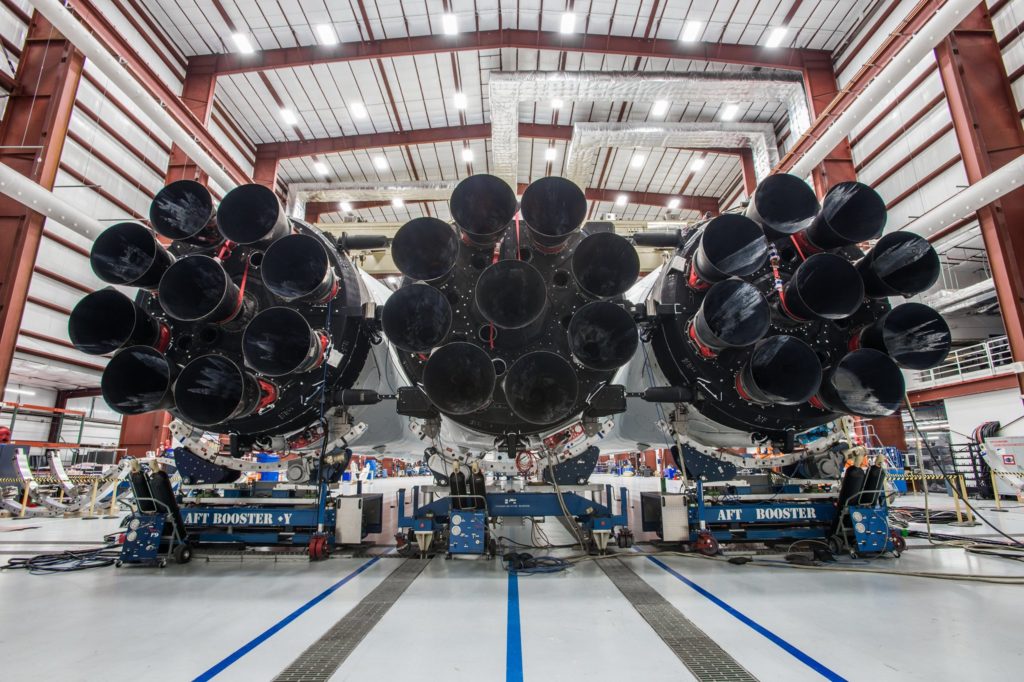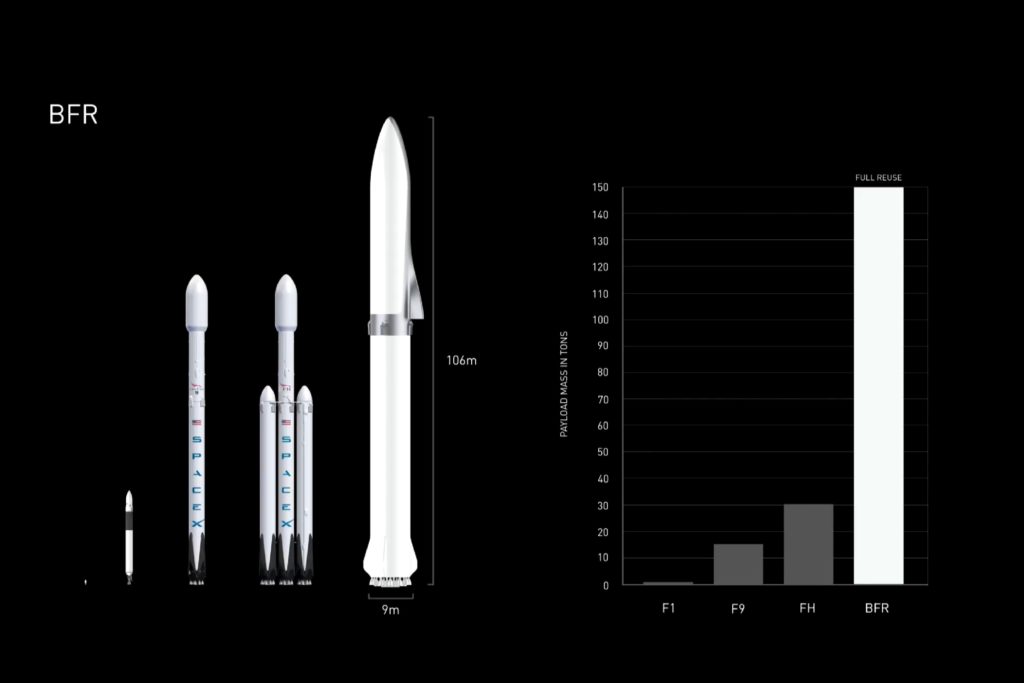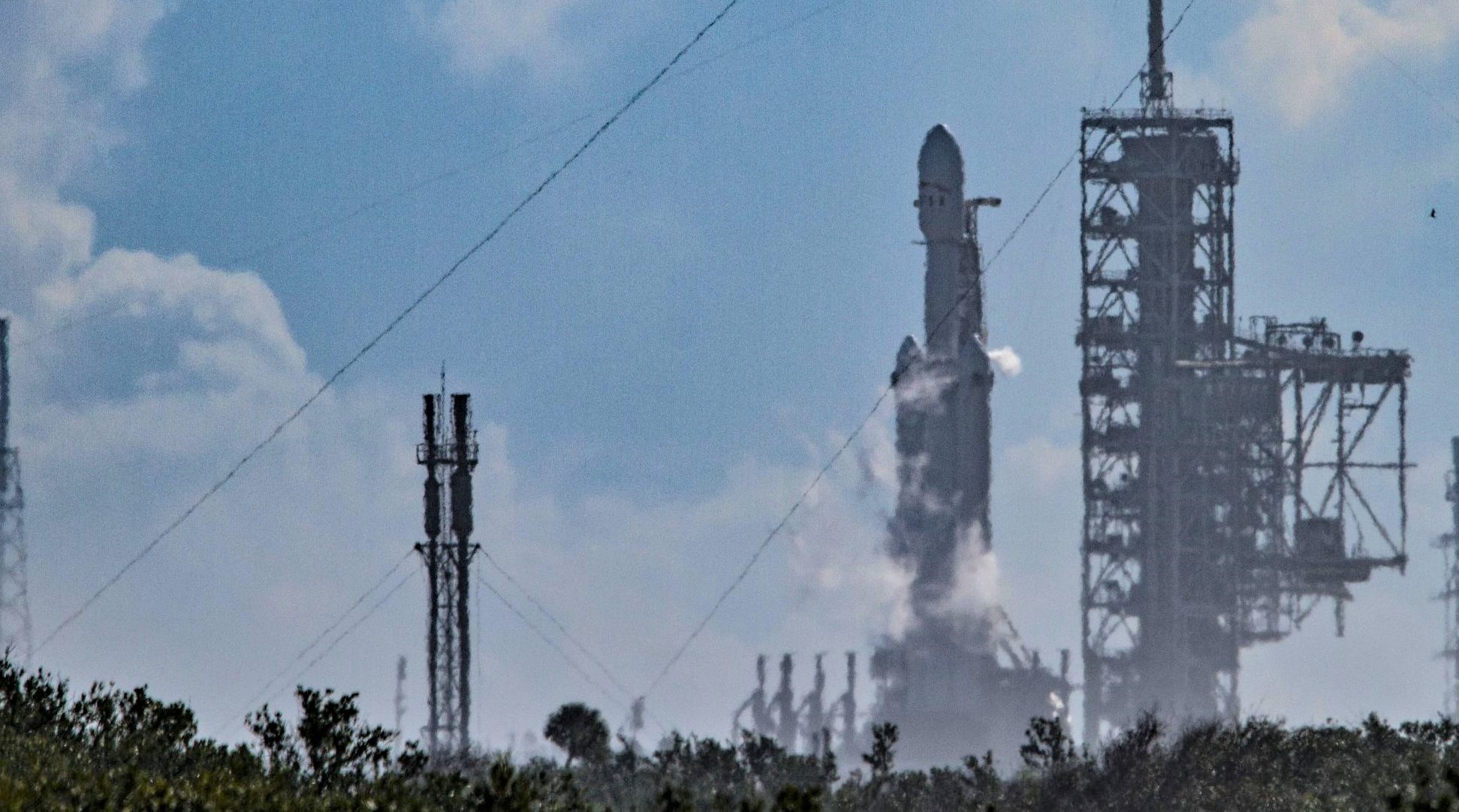
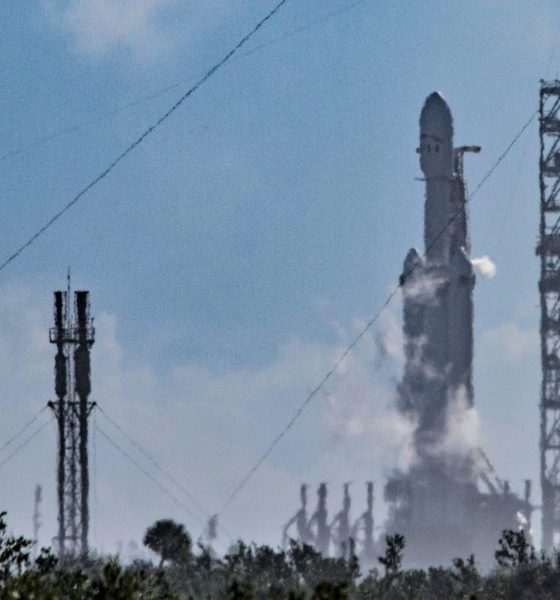
SpaceX
SpaceX Falcon Heavy completes successful rehearsal, static fire pushed back due to bug in launch pad hardware
More than a decade after its 2005 public conception, SpaceX is closer than ever to the first launch Falcon Heavy, the company’s newest rocket. Earlier this afternoon, the vehicle was aiming for its first static fire test, in which all 27 of its engines would be ignited (nearly) simultaneously in order to test procedures and the rocket itself. This attempt was sadly scrubbed, but only after the vehicle apparently completed a successful wet dress rehearsal, which saw Falcon Heavy fully loaded with propellant. According to Orlando’s News 13, the attempt was scrubbed only after one of eight hold-down clamps showed signs of bugs.
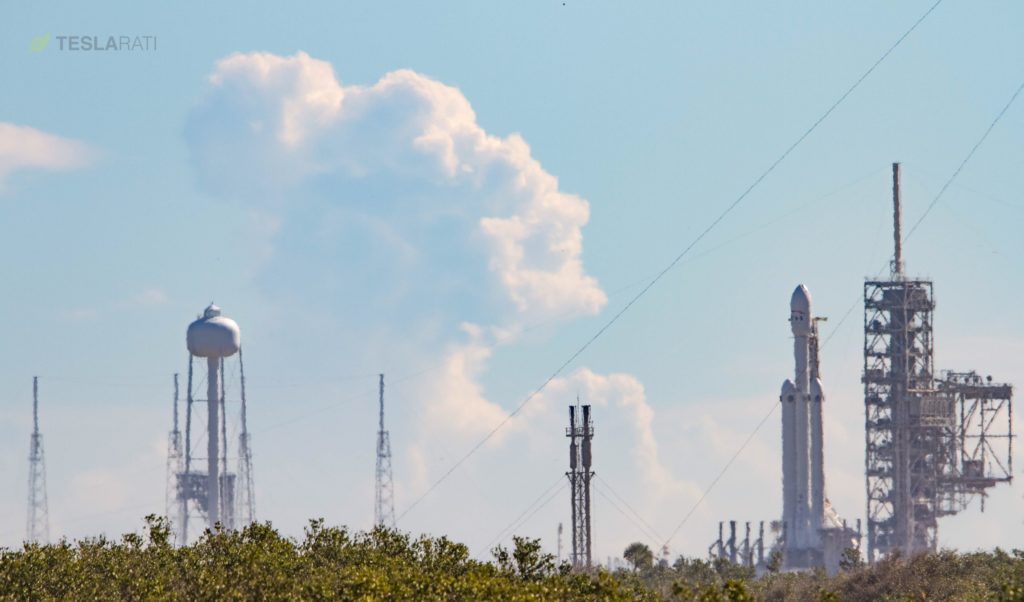
Falcon Heavy vertical at Pad 39A on Thursday, January 11. After a successful rehearsal, the static fire was scrubbed due to a small hardware bug. (Tom Cross/Teslarati)
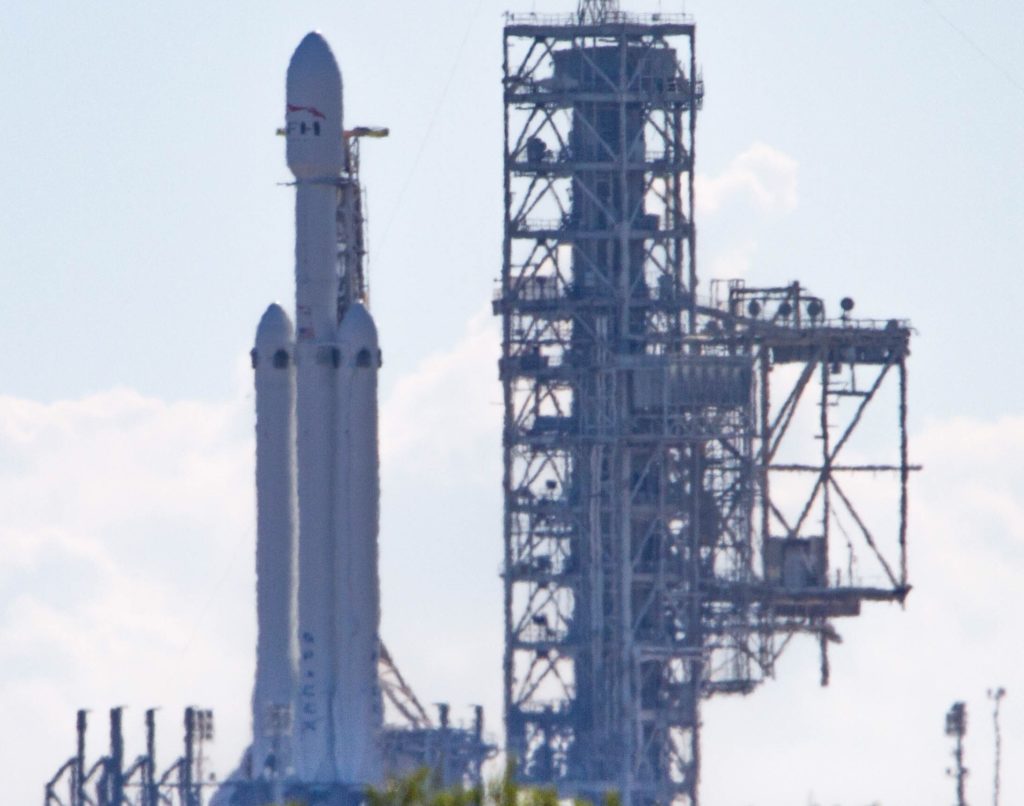
Falcon Heavy vertical at Pad 39A on Thursday, January 11. After a successful rehearsal, the static fire was scrubbed due to a small hardware bug. (Tom Cross/Teslarati)
While Falcon Heavy is not explicitly critical for SpaceX’s near-term launch business and its loftier future goals, the development and operation of such a massive launch vehicle will likely serve as a strong foundation as the company transitions more aggressively into the design, engineering, and manufacture of its still-larger BFR series of rocket boosters and upper stages. Falcon Heavy stands approximately as tall as Falcon 9 at around 70 m (230 ft), but features three times the thrust and a little less than three times the weight of SpaceX’s workhorse rocket. With 27 Merlin 1D engines to Falcon 9’s namesake nine, Falcon Heavy’s 22,800 kN (5,000,000 lbf) of thrust is a nearly inconceivably amount of power, equivalent to twenty Airbus A380 passenger jets at full throttle.
Why is Falcon Heavy important?
If SpaceX manages to pull off Falcon Heavy as a successful and reliable launch vehicle on the order of its reasonably successful Falcon 9, BFR may well be an easier vehicle to develop and operate, thanks to its single-core design. As Musk himself has discussed over the last year or so, the problem of safely and reliably distributing the thrust of Heavy’s side cores to the center core was unexpectedly difficult, as were the issues of igniting all 27 Merlin 1Ds and safely separating the side cores while in flight. Ultimately, the payload improvement (while in a fully reusable mode of operation) was quite small, particularly for the geostationary missions that make up essentially all prospective Falcon Heavy customer missions.
The additional complexity of recovery and refurbishing three separate Falcon 9 boosters almost simultaneously likely serves to only worsen the vehicle’s potential payoff, although the upcoming Block 5 iteration of Falcon 9 may partially improve the vehicle’s ease of operation. If Block 5 is indeed as reusable as SpaceX intends to make it, then a handful of Block 5 Falcon Heavy vehicles could presumably maintain a decent launch cadence for the vehicle without requiring costly and time-consuming shipping all over the continental US.
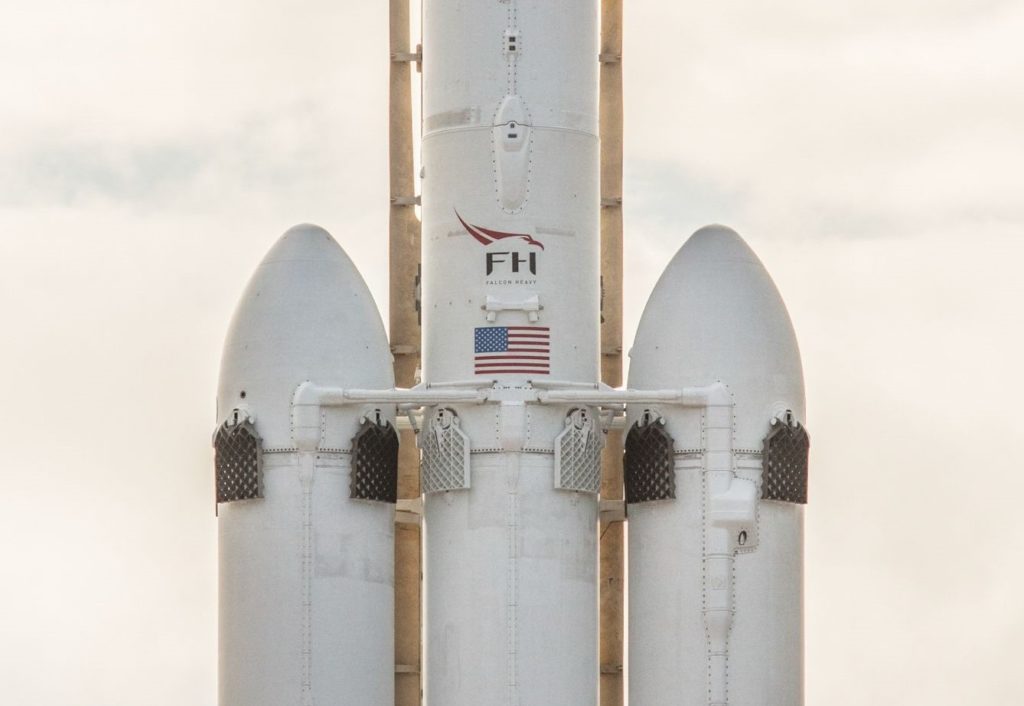
A closeup of Falcon Heavy’s three first stages, all featuring grid fins. The white bars in the center help to both distribute stress loads and separate the side cores from the center booster after launch. (SpaceX)
Nevertheless, the (hopefully successful) experience that will follow the launch and recovery operation of a super heavy-lift launch vehicle (SHLV) with ~30 first stage engines will be invaluable for SpaceX’s interplanetary goals. While BFR will be free of the complexity Falcon Heavy’s triple-core first stage added, it is still a massive vehicle that absolutely dwarfs anything SpaceX has attempted before. BFR in its 2017 iteration would mass around three times that of Falcon Heavy and feature 30 Raptor engines capable of approximately 53,000 kN (12,000,000 lbf) of thrust at liftoff, around 2.5x that of Heavy. Many, many other features mean that BFR and particularly BFS will be extraordinarily difficult to realize: BFS alone will be treading into truly unprecedented areas of spaceflight with the scale, longevity, and reusability it is intended to achieve while comfortably ferrying dozens of astronauts to and from Mars and the Moon.
However, the scale of BFR is equivalent to that of the famous Saturn V rocket that took astronauts to the Moon in the 1960s and 70s. In other words, while still dumbfoundingly massive and unprecedented in the modern era, rockets at the scale of BFR do in fact have a precedent of success, which lends the effort considerable plausibility, at least at proof-of-concept level. As of September 2017, Elon Musk suggested that SpaceX was aiming to begin construction of the first BFS (Big ____ Spaceship) by the end of Q2 2018, a truly Muskian deadline that probably wont hold. Still, if construction of the first prototype begins at any point in 2018, it will bode well for SpaceX’s aggressive timelines.
- Falcon Heavy’s three boosters and 27 Merlin 1D engines on full display. (SpaceX)
- BFR shown to scale with Falcon 1, 9, and Heavy. (SpaceX)
- .While SpaceX’s own visualizations are gorgeous and thrilling in their own rights, Romax’s interpretation adds an unparalleled level of shock and awe. (SpaceX)
In the meantime, BFR’s precursor Falcon Heavy has effectively completed its first wet dress rehearsal, although the static fire attempt was scrubbed for the day. This is understandable for such a complex and untested vehicle, especially after SpaceX’s exceptionally quick modifications to Pad 39A. While unofficial, word is that an issue with one of the Transport/Erector/Launcher’s (TEL) eight separate launch clamps caused the scrub. Those launch clamps ensure that the massive vehicle would stay put during a static fire, and the status of those clamps would be especially important during such an unusually long static fire of such a powerful rocket.
Stay tuned for updates on SpaceX’s upcoming launches and Falcon Heavy’s next static fire attempt, likely within the next several days. The vehicle’s inaugural launch date is effectively up in the air until the static fire has been successfully completed, but as of yesterday SpaceX was understood to be targeting January 26th. Delays are to be expected.
Follow along live as Teslarati’s launch photographer Tom Cross weathers the delays and covers the static fire attempt live from Cape Canaveral.

Elon Musk
Starlink passes 9 million active customers just weeks after hitting 8 million
The milestone highlights the accelerating growth of Starlink, which has now been adding over 20,000 new users per day.

SpaceX’s Starlink satellite internet service has continued its rapid global expansion, surpassing 9 million active customers just weeks after crossing the 8 million mark.
The milestone highlights the accelerating growth of Starlink, which has now been adding over 20,000 new users per day.
9 million customers
In a post on X, SpaceX stated that Starlink now serves over 9 million active users across 155 countries, territories, and markets. The company reached 8 million customers in early November, meaning it added roughly 1 million subscribers in under seven weeks, or about 21,275 new users on average per day.
“Starlink is connecting more than 9M active customers with high-speed internet across 155 countries, territories, and many other markets,” Starlink wrote in a post on its official X account. SpaceX President Gwynne Shotwell also celebrated the milestone on X. “A huge thank you to all of our customers and congrats to the Starlink team for such an incredible product,” she wrote.
That growth rate reflects both rising demand for broadband in underserved regions and Starlink’s expanding satellite constellation, which now includes more than 9,000 low-Earth-orbit satellites designed to deliver high-speed, low-latency internet worldwide.
Starlink’s momentum
Starlink’s momentum has been building up. SpaceX reported 4.6 million Starlink customers in December 2024, followed by 7 million by August 2025, and 8 million customers in November. Independent data also suggests Starlink usage is rising sharply, with Cloudflare reporting that global web traffic from Starlink users more than doubled in 2025, as noted in an Insider report.
Starlink’s momentum is increasingly tied to SpaceX’s broader financial outlook. Elon Musk has said the satellite network is “by far” the company’s largest revenue driver, and reports suggest SpaceX may be positioning itself for an initial public offering as soon as next year, with valuations estimated as high as $1.5 trillion. Musk has also suggested in the past that Starlink could have its own IPO in the future.
News
SpaceX shades airline for seeking contract with Amazon’s Starlink rival

SpaceX employees, including its CEO Elon Musk, shaded American Airlines on social media this past weekend due to the company’s reported talks with Amazon’s Starlink rival, Leo.
Starlink has been adopted by several airlines, including United Airlines, Qatar Airways, Hawaiian Airlines, WestJet, Air France, airBaltic, and others. It has gained notoriety as an extremely solid, dependable, and reliable option for airline travel, as traditional options frequently cause users to lose connection to the internet.
Many airlines have made the switch, while others continue to mull the options available to them. American Airlines is one of them.
A report from Bloomberg indicates the airline is thinking of going with a Starlink rival owned by Amazon, called Leo. It was previously referred to as Project Kuiper.
American CEO Robert Isom said (via Bloomberg):
“While there’s Starlink, there are other low-Earth-orbit satellite opportunities that we can look at. We’re making sure that American is going to have what our customers need.”
Isom also said American has been in touch with Amazon about installing Leo on its aircraft, but he would not reveal the status of any discussions with the company.
The report caught the attention of Michael Nicolls, the Vice President of Starlink Engineering at SpaceX, who said:
“Only fly on airlines with good connectivity… and only one source of good connectivity at the moment…”
CEO Elon Musk replied to Nicolls by stating that American Airlines risks losing “a lot of customers if their connectivity solution fails.”
American Airlines will lose a lot of customers if their connectivity solution fails
— Elon Musk (@elonmusk) December 14, 2025
There are over 8,000 Starlink satellites in orbit currently, offering internet coverage in over 150 countries and territories globally. SpaceX expands its array of satellites nearly every week with launches from California and Florida, aiming to offer internet access to everyone across the globe.
Currently, the company is focusing on expanding into new markets, such as Africa and Asia.
News
Tesla hints at Starlink integration with recent patent
“By employing polymer blends, some examples enable RF transmission from all the modules to satellites and other communication devices both inside and outside the vehicle.”

Tesla hinted at a potential Starlink internet terminal integration within its vehicles in a recent patent, which describes a vehicle roof assembly with integrated radio frequency (RF) transparency.
The patent, which is Pub. No U.S. 2025/0368267 describes a new vehicle roof that is made of RF-transparent polymer materials, allowing and “facilitating clear communication with external devices and satellites.”
Tesla believes that a new vehicle roof design, comprised of different materials than the standard metallic or glass elements used in cars today, would allow the company to integrate modern vehicular technologies, “particularly those requiring radio frequency transmission and reception.
Tesla has recently filed a US patent application on integrating RF transparent materials into the roof structure.
“facilitating clear communication with external devices and satellites”
Tesla fleet is getting @Starlink connectivity integration soon. LFG @Tesla @elonmusk… pic.twitter.com/bLa8YtPLd1
— Chansoo Byeon (@Chansoo) December 9, 2025
Instead of glass or metallic materials, Tesla says vehicles may benefit from high-strength polymer blends, such as Polycarbonate, Acrylonitrile Butadiene Styrene, or Acrylonitrile Styrene Acrylate.
These materials still provide ideal strength metrics for crashworthiness, stiffness for noise, vibration, and harshness control, and are compliant with head impact regulations.
They would also enable better performance with modern technologies, like internet terminals, which need an uninterrupted signal to satellites for maximum reception. Tesla writes in the patent:
“By employing polymer blends, some examples enable RF transmission from all the modules to satellites and other communication devices both inside and outside the vehicle.”

One of the challenges Tesla seems to be aware of with this type of roof design is the fact that it will still have to enable safety and keep that at the forefront of the design. As you can see in the illustration above, Tesla plans to use four layers to increase safety and rigidity, while also combating noise and vibration.
It notes in the patent that disclosed examples still meet the safety requirements outlined in the Federal Motor Vehicle Safety Standards (FMVSS).
Starlink integrated directly into Tesla vehicles would be a considerable advantage for owners. It would come with a handful of distinct advantages.
Initially, the inclusion of Starlink would completely eliminate cellular dead zones, something that is an issue, especially in rural areas. Starlink would provide connectivity in these remote regions and would ensure uninterrupted service during road trips and off-grid adventures.
It could also be a critical addition for Robotaxi, as it is crucial to have solid and reliable connectivity for remote monitoring and fleet management.
Starlink’s growing constellation, thanks to SpaceX’s routine and frequent launch schedule, will provide secure, stable, and reliable internet connectivity for Tesla vehicles.
Although many owners have already mounted Starlink Mini dishes under their glass roofs for a similar experience, it may be integrated directly into Teslas in the coming years, either as an upgrade or a standard feature.
